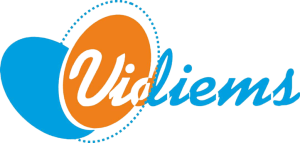10 Must-Have Tools and Resources for Successful Technical Writing
1. Grammarly: The Grammar Guru
Benefit: Grammarly stands out as an indispensable tool for technical writers, offering more than just a basic grammar check. Its advanced features include context-based suggestions for sentence structure, vocabulary enhancement, and writing style improvements.
How to Use Effectively: To harness the power of Grammarly, start by installing the browser extension for real-time corrections while writing in various online platforms. Additionally, uploading your documents to the Grammarly online editor allows for a comprehensive review. The tool not only corrects errors but provides insightful explanations, helping you understand and learn from your mistakes.
2. Microsoft Word: The Classic Word Processor
Benefit: Microsoft Word remains a cornerstone for technical writers, providing a stable and feature-rich environment for creating and formatting documents. With its robust set of tools, it facilitates efficient writing, editing, and collaboration.
How to Use Effectively: Leverage features such as heading styles for document structure, insert a table of contents for easy navigation, and use track changes to collaborate seamlessly with others. Mastering keyboard shortcuts and customizing your workspace can significantly enhance your productivity within the application.
3. LaTeX: Precision in Typesetting
Benefit: For complex technical documents, LaTeX offers unparalleled precision in typesetting. It excels in handling mathematical equations, scientific notation, and intricate formatting requirements.
How to Use Effectively: Get acquainted with LaTeX syntax, and consider using online editors like Overleaf for collaborative writing with real-time preview features. Utilize its powerful document class options, bibliographic tools, and version control systems for large and intricate projects.
4. Scrivener: Organize Your Thoughts
Benefit: Scrivener is a versatile tool designed to help writers organize thoughts, research, and drafts efficiently. It’s particularly beneficial for larger technical writing projects.
How to Use Effectively: Harness Scrivener’s corkboard feature to outline your document and easily rearrange sections. Take advantage of its snapshot feature to create checkpoints in your document, allowing you to experiment with revisions without losing your original work.
5. MindMeister: Mind Mapping Brilliance
Benefit: MindMeister takes brainstorming and outlining to the next level by allowing you to create dynamic mind maps. It aids in visualizing complex technical concepts and provides a structured approach to document planning.
How to Use Effectively: Start with a central idea, branch out into main sections, and then subtopics. Export the mind map to serve as an outline for your technical document. The visual representation helps in maintaining a clear and logical flow in your writing.
6. Adobe Acrobat Pro: Mastering PDFs
Benefit: Adobe Acrobat Pro is a crucial tool for handling PDF documents, a common format for sharing technical documentation. It allows for comprehensive editing, commenting, and creating interactive forms.
How to Use Effectively: Utilize features such as commenting to gather feedback, editing text directly in the PDF, and creating interactive forms for user engagement. Ensure that your PDFs are compatible with various readers, ensuring a seamless experience for your audience.
7. Markdown: Simplify Formatting
Benefit: Markdown simplifies the process of formatting text for the web, making it an ideal choice for documenting software projects and creating content for online platforms.
How to Use Effectively: Learn the basics of Markdown syntax, including formatting for headings, lists, links, and code blocks. Utilize Markdown editors like Typora or Visual Studio Code with Markdown extensions for an efficient and distraction-free writing experience.
8. Evernote: Capture Ideas Anywhere
Benefit: Evernote is a versatile note-taking tool that allows you to capture ideas, snippets, and research from anywhere. Its cross-platform compatibility ensures that your notes are always accessible.
How to Use Effectively: Organize your notes into notebooks and use tags for easy retrieval. Take advantage of Evernote’s web clipper to save online research directly into your notes. Its seamless synchronization ensures that your ideas are at your fingertips, whether you’re at your desk or on the go.
9. Hemingway Editor: Simplify and Clarify
Benefit: Hemingway Editor is designed to simplify and clarify your writing, making it more accessible to a broader audience. It identifies complex sentences, excessive adverbs, and suggests improvements for overall readability.
How to Use Effectively: Paste your text into the editor and follow suggestions to eliminate unnecessary complexity. Aim for clear and concise technical writing. The tool provides a readability score, helping you gauge the accessibility of your content to different audiences.
10. Stack Overflow and GitHub: Community Collaboration
Benefit: Engaging with the technical community on platforms like Stack Overflow and GitHub offers invaluable opportunities for collaboration, feedback, and problem-solving.
How to Use Effectively: Actively participate in relevant forums, ask questions, and contribute to discussions. On GitHub, leverage version control for tracking changes in your technical documents and collaborating seamlessly with others. These platforms not only enhance the quality of your documentation but also provide insights from a diverse community of experts.
Incorporating these tools and resources into your technical writing toolkit will not only enhance the quality of your documentation but also streamline your writing process. Stay organized, collaborate efficiently, and produce content that is clear, precise, and accessible to your target audience.





Leave a Reply
Want to join the discussion?Feel free to contribute!